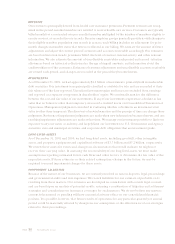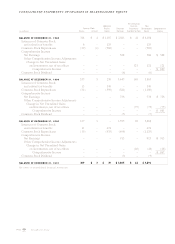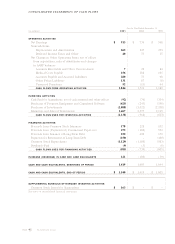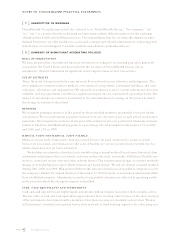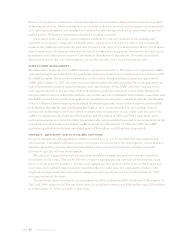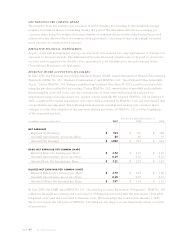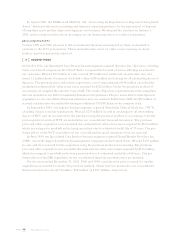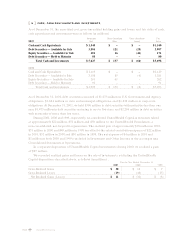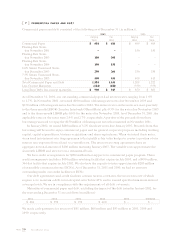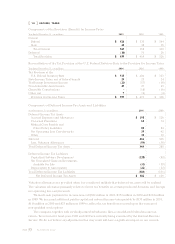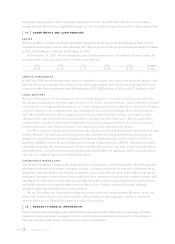United Healthcare 2001 Annual Report Download - page 45
Download and view the complete annual report
Please find page 45 of the 2001 United Healthcare annual report below. You can navigate through the pages in the report by either clicking on the pages listed below, or by using the keyword search tool below to find specific information within the annual report.
PAGE 44 UnitedHealth Group
GOODWILL AND OTHER INTANGIBLE ASSETS
Goodwill represents the amount by which the purchase price and transaction costs of businesses we
have acquired exceeds the estimated fair value of the net tangible assets and identifiable intangible
assets of these businesses. Goodwill and other intangible assets are amortized on a straight-line basis
over useful lives ranging from three years to 40 years, with a weighted-average useful life of 32 years at
December 31, 2001.
The two most significant components of goodwill and other intangible assets are: 1) goodwill of
$2.2 billion at December 31, 2001, and $2.1 billion at December 31, 2000, net of accumulated amortization;
and 2) employer group contracts, supporting infrastructure, distribution networks and institutional
knowledge of $512 million at December 31, 2001, and $530 million at December 31, 2000, net of
accumulated amortization.
LONG-LIVED ASSETS
We review long-lived assets, including goodwill and other intangible assets, and property, equipment
and capitalized software, for events or changes in circumstances that would indicate we might not
recover their carrying value. We consider many factors, including estimated future cash flows associated
with the assets, to make this decision. We record assets held for sale at the lower of their carrying
amount or fair value, less any costs for the final settlement.
OTHER POLICY LIABILITIES
Other policy liabilities include the rate stabilization fund associated with the AARP program (see Note 5)
and customer balances related to experience-rated insurance products.
Customer balances represent premium payments we have received that exceed what customers owe
based on actual claim experience, and deposit accounts that have accumulated under experience-rated
contracts. At the customer’s option, these balances may be refunded or used to pay future premiums or
claims under eligible contracts.
INCOME TAXES
Deferred income tax assets and liabilities are recognized for the differences between the financial and
income tax reporting bases of assets and liabilities based on enacted tax rates and laws. The deferred
income tax provision or benefit generally reflects the net change in deferred income tax assets and
liabilities during the year. The current income tax provision reflects the tax consequences of revenues
and expenses currently taxable or deductible on various income tax returns for the year reported.
STOCK-BASED COMPENSATION
We do not recognize compensation expense in connection with employee stock option grants because
we grant stock options at exercise prices that equal or exceed the fair market value of the stock on the
date the options are granted. Information on what our stock-based compensation expenses would have
been had we calculated those expenses using the fair market values of outstanding stock options is
included in Note 9.



